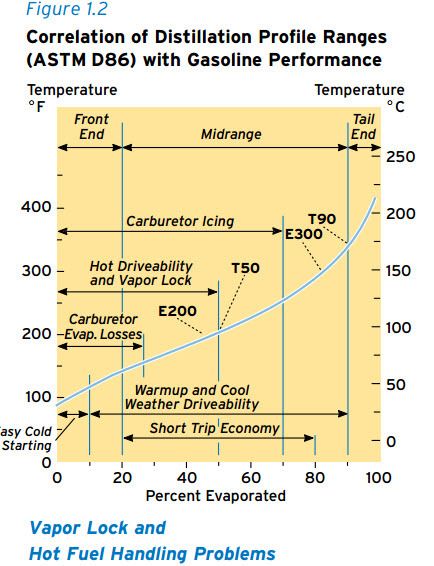Re: Gasoline Distillation Curves
If I am allowed to question any of this further, how do we know the temp of the fuel vs the temp of the container?
Why doesn't the fuel start to boil when it hits 100* F and continue boiling right on up through the range?
In stock form with exhaust gas right at the base of the carb even in the dead of winter I'm sure we can hit 150*. Why is our fuel not boiling all the time?
At 175* even the fuel without ethanol has 35% of it's fuel with boiling points below that number. Is 35% the threshold for trouble?
Curious minds want to know.
Steve
If I am allowed to question any of this further, how do we know the temp of the fuel vs the temp of the container?
Why doesn't the fuel start to boil when it hits 100* F and continue boiling right on up through the range?
In stock form with exhaust gas right at the base of the carb even in the dead of winter I'm sure we can hit 150*. Why is our fuel not boiling all the time?
At 175* even the fuel without ethanol has 35% of it's fuel with boiling points below that number. Is 35% the threshold for trouble?
Curious minds want to know.
Steve



Comment